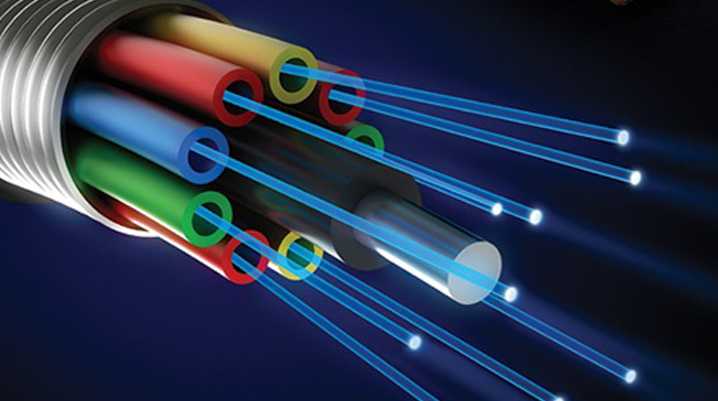- Home
- About us
- Products & Solutions
- Siddharsh Systems & Solutions Private Limited.
- Alliances
- Services
- Insight
- Contact us
- April 17, 2021
- By Animesh Singh
- Siddharsh
Building a smart city? Then start with smart buildings
Smart home tech is becoming ever-more-prevalent, as consumers bring increasing numbers of connected devices into their lives. Larger buildings, including office blocks and shopping centres, are also seeing an influx. These initiatives are driven by the consumer or the building owner, tenant or manager. When you think about buildings as part of larger neighbourhoods, which in turn form part of larger towns and cities, these initiatives are being driven from the bottom of the pyramid. Conversely, broader smart city initiatives tend to be driven from top down, by local or national government bodies, often working with utility companies. The general aim of smart cities is to make urban areas more efficient, more sustainable and more attractive to residents and visitors. But a report from ABI found that these top-down-driven smart city initiatives haven’t fully delivered on their aims, despite projects such as smart street lighting and car- or bicycle-sharing schemes being successful in places. This is because bigger projects that require greater integration – perhaps upgrading a city’s power-distribution infrastructure or overhauling its healthcare services – often run into the old barriers of cost and complexity. The report’s authors suggest that linking smart home (ie bottom-up) and smart city (top-down) projects could benefit both sides. Other factors are also driving the development of smarter buildings and cities. Legislation, such as the US Commercial Building Initiatives and the EU’s Energy Performance of Buildings Directive (EPBD), is increasing localised focus on limiting energy usage and greenhouse gas emissions. When you consider that commercial premises account for more than a third of US electricity consumption, it’s easy to see why these buildings in the spotlight. And with the right push from the businesses, local authorities and governments who have an interest in sharing data to monitor and control the built environment, we’re likely to see an increase in smart buildings that play a part in realising truly smart cities. Let’s look at a couple of examples of how smart building initiatives can add up to create smarter urban environments and solve pressing challenges. The renewable energy issue If we’re to significantly increase the amount of energy we generate from renewables, our power grids themselves will need modernizing to accommodate it. The major challenge is to balance supply and demand, thereby avoiding outages when consumers’ thirst for electricity is greater than what the sun, wind and other renewables are generating at that moment in time. One of the biggest changes required to power grids is being driven by the decentralisation of production. Traditionally, grids have had a fairly straightforward architecture that distributes power from large-scale generators to cities, then to neighbourhoods and finally to each building. To keep things running smoothly, the utility companies increase or decrease production to match fluctuating demand from consumers. Once you start feeding in energy from individual buildings, things become more complicated. Predicting the output of a large hydro or fossil fuel generator can be done relatively reliably. But the output of a small photovoltaic installation on a residential roof can be affected by localised weather conditions. As a result, maintaining that delicate balance of supply and demand across the whole grid becomes hugely more complex. And while the existing infrastructure is capable of handling small amounts of variable renewable energy, when this share grows, the companies involved in operating our power grids need to look at different solutions. Smart buildings: helping tackle the power grid challenge You might be wondering what all of this has to do with smart buildings. With more of these buildings being fitted with solar panels, so they are contributing to this power grid management challenge. But the good news is that as well as being part of the problem, they also provide new solutions. These include energy storage, smart appliances, electric vehicle charging and demand-response management, using connected thermostats. While these technologies should help homeowners, tenants or building managers to drive down their energy bills, the bigger impact could ultimately be for power companies, who can harness these capabilities to address the challenge we’ve been outlining. And this is why utility businesses could well become a major player in the push to turn more buildings into smart buildings. For example, they could offer consumers reduced tariffs in return for control over when they use their appliances, charge their electric cars or consume the stored energy in their domestic battery. Smarter care for an ageing population The power grid isn’t the only place where smarter buildings can play a role in creating smart cities. Care for the elderly is another. With an ageing population, pressure on care homes and other specialised medical facilities is growing, and the bill for providing increased amounts of care is typically picked up by a city’s authorities. At the same time, many individuals are keen to remain in their own homes and stay independent for as long as possible. These are some of the reasons why e-health and domestic assisted living solutions should be important parts of smart city strategies. And in a lot of cases, the connected home is the perfect touchpoint. Possibilities include linking up people’s lighting and appliances to their care providers, so that they can ensure the person is remaining mobile. Wearables that detect if a person falls over are another example. Add smart locks to the front door, to make it simpler for people with reduced mobility to get care. And provide in-home access to doctors and other medical staff, via an easy-to-use tablet or phone app. All of this can make it easier for elderly people to remain in their own homes while receiving tailored, high-quality care. And it’s why we expect to see city authorities starting to throw their weight behind these healthcare platforms or subsidising the technology, instead of expanding the provision of conventional residential care. Linking smart buildings to create smarter streets, neighbourhoods and cities By joining forces, residents and businesses can extend the value of their smart home or smart building investments, thereby helping create smart cities from
- April 17, 2021
- By Animesh Singh
- Siddharsh
Siddharsh – A Brand In Making
The journey of Siddharsh began with a vision of providing innovative, future-ready high quality certified connectivity products and solutions. Today, we are at the forefront of shaping networks for ever-growing demands of various industries like Enterprises (PSUs and Govt. sectors), Telecom service providers, Cloud service providers, Smart cities, and realty sectors. Our core strength lies in providing innovative products and solutions – fiber optic cable, data center solutions, and structured cabling solutions. Our products are designed for Interoperability, Convergence, Security, Emerging global standards & cross-industry needs for a global market in various domains. With our stronghold on the business and constantly upgrading of the technology, we have been able to offer customized products for some big and reputed organizations like Cable harness, High density for ISRO, ip67 rating box for Infosys, Optical-IP conversion for Google, Cabling solutions for compatibility needs for Foxconn, etc. We partner with clients, organizations to understand and develop a custom data center cabling solution to cater to all of their present and future infrastructure needs. Meeting the networking needs of different industries, we take pride as one of the most trusted and reliable names in offering high-quality Cat6A cables that offer enhanced performance in the transmission of high-speed data, voice, and video signals (both digital and analog) over LAN. We have been leading Cat6 cable manufacturers in India offering the best quality as per the set industry standards. What wins us the game is our strict quality control, fast turnaround times, emphasis on reducing TCO (total cost of ownership) to a customer, offering customized end to end solutions, customer certification support for special site requirements. All our products- fiber optic cables, Cat6A cables, etc. come with 25 years performance warranty and 5 years guarantee. During a short span of 6 years, we have catered to small, medium and big enterprises with our dedicated product line and today we have a PAN India presence with certifications from all the leading organizations and soaring high on the success path we envisioned for us and our clients and associates.
- April 17, 2021
- By Animesh Singh
- Siddharsh
The Importance And Choice Of Fiber Tools For System Integrators
Siddharsh offers totally integrated solutions to its clients and system integrators, which helps them avoid approaching different vendors and purchasing each component separately. Our amazing range of products serves the networking needs of various industries like Education, Information Technology, the Government, and Hospitality, besides meeting the needs of international clients in India for the Global innovation center. We provide a strong support base for system integrators. The importance and usefulness of a systems integrator cannot be undermined. As compared to offering expensive and unique components, we believe in cost-effective and preconfigured solutions Various tools are required for the installation and maintenance of networking products or their use in system integrators. Why are fiber optic tools important? Tools are extremely important to install, maintain, and troubleshoot networking products. Fiber optic networks are extremely delicate and complex to install, maintain, and troubleshoot. Specific tools need to be used which are meant for a particular purpose to ensure fiber optic cables are not damaged and high performance is achieved. There are different procedures to be adapted in order to get effective results and it is imperative to understand these basic, but golden rules, in order to get the best results. What are the different kinds of fiber optic tools for testing and installation? Splicing Tools There are fiber optics that need to be melted together, for which splicing tools are required. There are different kinds of splicing tools for fiber optics that are available in the market. They are heat oven, fiber splice protection sleeves, fusion splice, optic lever, and many others. Mechanical and fusion splicing are the two kinds of splicing that can be done. Two fiber ends of an optic cable are held together in order to have a light pass from one fiber to another. This kind of process is managed by mechanical tools. Infusion splicing, glass ends of the fiber are fused or welded together to ensure that there is a continuous connection and very little light is lost Fiber Inspection or Fiber Tools Fiber tools are used for the production and troubleshooting of fiber optics, to ensure that they work continuously and effectively. There are various aspects of a cable that can be tested; the amount of power that is being transmitted, breakages, and any other aspect that needs to be checked. There are different kinds of inspection tools that can be used and some of them are faulty locators and optical identifiers. Cleaning Tools In order to transmit light without any obstruction, it is important to ensure that the fiber cables are free from dust, dirt, oil, and other constraints. The main areas that require cleaning are connectors and ferrules. No cables should be touched with bare or naked hands, in order to avoid contamination and damaging of the cables. Alcohol and wipes are the best materials to be used for cleaning. The various kinds of Fiber Optic Tools offered by Siddharsh and their uses: Splicing Machines Splicing Machines like OFS-108, OFS-109, and Fiber Splicing Tool Kits are used for high-speed fiber fusion. Fiber Strippers and Fiber Jacket Strippers These tools are used to remove the jacketing, from 1.6 mm to 3.0 mm. The coating is stripped to expose the fiber cladding. Cutters There are two kinds of Cutters – Fiber Cable Yarn Cutters and Fiber Tubing Cutters. Cutters are used to cut the members inside the Fiber Jackets and the Metal Central Tube. Fiber Optic Adapters They are used to join two fiber optic patch cables together and come with superior low loss performances and high repeatability. Slitters Splicing Machines like OFS-108, OFS-109, and Fiber Splicing Tool Kits are used for high-speed fiber fusion. Splicing Machines 3C3 offers Universal Round Fiber Cable Slitters, Armored Cable Slitters, and Longitudinal Cable Sheath Slitters and is used for jacket removal of PE, PVC, and Rubber High Precision Cleavers They are used to cleave fibers quickly, easily, and effectively and are a perfect aid to any field splicing systems. Features of Tools from Siddharsh – Why choose us for your Tools? Our tools are used by several manufacturers across various industries, thus making them flexible and user-friendly. The prices are so cost-effective that customers are pleasantly surprised and delighted with their effectiveness and the value-add that they bring to the business. These tools are designed in such a way that they meet the challenges that new-age businesses demand. The material of the highest quality is used, thus making our tools deliver excellent and consistent performance, anytime, every time. They are waterproof and moisture resistant and hence they can be used, both indoors and outdoors. When a comparison is made with other products available in the industry, we stand out from the competition for our effectiveness and uniqueness.
- April 16, 2021
- By Animesh Singh
- Siddharsh
Smart Cabling For Smart Buildings
Smart Building Networks have many requirements like flexibility, the ability to scale up or down, Power of Ethernet (POE), Cloud applications and support of Internet of Things. The networks in smart buildings need to support a wide range of applications and devices, from communications and telephony to facility management systems, security and access control, wireless access points and IoT devices. Traditionally, cabling in buildings was equipped with a vertical backbone. It rises through the building and branches off wherever a floor converges and then it would run to individual devices. However, If there comes a change in the designated use of space in the building, recabling involves a lot of work like tearing down the walls or adding the ports. So, a new approach was introduced,using pathways and consolidation points on different floors. This approach offers freedom in developing solutions but the designers need to adhere to fixed routes. This has made designing, configuring and reconfiguring networks more easier and suitable for smart buildings. Fibre or copper? Which is best for Smart buildings? Fibre is the best solution wherever the highest speeds and lowest latency are required but not every connection in a building needs the highest possible speed. Over 100m distances, Cat.6A cabling supports speed up to 10GB/s which is sufficient for most in-building applications. Apart from speed and latency, there are other criterias to be considered. One reason why fibre is utilised is because of the fact that it can carry data over considerable lengths whereas copper’s physical resistance means its use is limited to shorter lengths. A Fibre based LAN goes with a number of costly elements like UPS power, floor space, data grounds and cabling closets. Fibre uses fewer electrical components, eliminating potential difficulties related to interference. It doesn’t mean that fibre isn’t affected by other kinds of interference. If light sources are not monochromatic, pulse interference may occur. Copper isn’t excessively troubled by interference. It is very important to take great care when installing copper as well as fibre but copper tends to be more cost effective when it comes to maintenance and rerouting. Copper supports good devices but an All-Fibre Lan would require hardware and equipment upgrades that may boost fibre adoption costs. Therefore, both fibre and copper have their pros and cons depending upon the specific requirements. Fibre and copper solutions will always exist side by side. Each is used in applications where they add good value with a price point that makes sense for the business. Opting for ‘just adequate’ cabling can affect performance, but installing the highest performing cable every inch of the network is costly and pointless. It is always good to consider the cost and efforts related to maintenance, installation configuration and reconfiguration. Taking time to select the perfect type and quality for different parts of the network pays-off in the long run.







